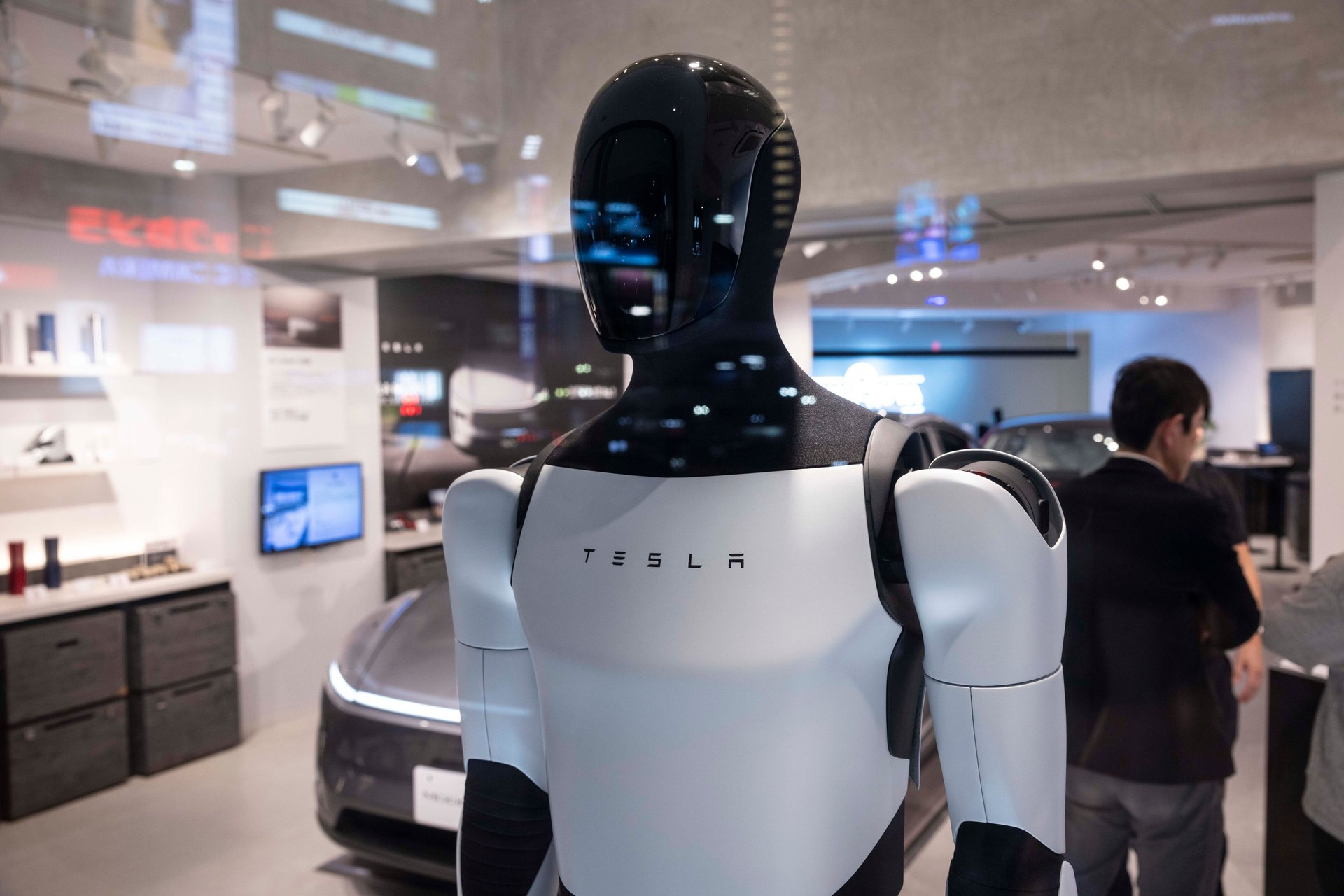Tesla's big bet on humanoid robots may be hitting a wall
Optimus humanoid robots reportedly are behind schedule, and Tesla’s once-unshakable narrative is starting to crack.

Stanislav Kogiku/SOPA Images/LightRocket via Getty Images
Tesla reportedly is struggling to keep pace with one of Elon Musk’s most ambitious promises yet: producing 5,000 of its Optimus humanoid robots this year.
Suggested Reading
Nearly eight months into 2025, the company has only built a few hundred units — far short of the output needed to meet its target, according to The Information. Sources familiar with the project say production bottlenecks, leadership turnover, and technical challenges are slowing progress and could force Tesla to push back its timeline.
Related Content
A rough quarter for Tesla
The news comes during a difficult stretch for Tesla. This week, the company reported a 12% drop in overall revenue and a 16% decline in automotive sales, its biggest fall in more than a decade. With federal tax incentives for electric vehicles being phased out, Musk warned investors on the company’s Q2 earnings call that Tesla faces “a few rough quarters” ahead.
On that call, Musk’s usual trademark confidence was noticeably muted. “We’re in this, like, weird transition period,” he admitted. Analysts described his tone as “the most somber” they’ve ever heard, a stark change from the certainty that has historically driven Tesla’s sky-high stock price. Tesla’s shares sank 9% the following day as investors weighed whether or not Musk’s future-focused promises could still support the company’s valuation.
Amid falling car sales, Musk has been attempting to shift the narrative to new bets on autonomous vehicles and robotics, pointing to Tesla’s early rollout of a robotaxi service in Austin and its plans to scale production of humanoid robots.
Optimus production delays
At the center of Musk’s pitch to investors is Optimus, a bipedal humanoid robot Tesla first unveiled in 2022. Musk has claimed the robot could one day perform tasks ranging from factory work to household chores and has said it could eventually drive Tesla’s valuation to $25 trillion.
For 2025, Tesla had set an internal goal of producing 5,000 units. Instead, the company is still in the “hundreds,” The Information reported.
Musk told investors this week that production of the latest “Optimus 3” model won’t begin until early next year. “We will scale Optimus production as fast as possible and try to get to a million units a year as quickly as possible,” Musk said. “We think we can get there in less than five years. That’s a reasonable aspiration.”
But even that claim came with a noticeably more cautious tone. Gone was the soaring rhetoric of 2023, when Musk insisted thousands of Optimus bots would be working in Tesla factories by the end of this year. On this call, there was no mention of robots working “productively,” only that Optimus prototypes are “walking around the office.”
Technical bottlenecks and talent loss
One key obstacle: hands. Sources told The Information that Tesla has struggled to engineer human-like dexterity for Optimus, which is critical for the robot to perform varied tasks.
The company has reportedly been stockpiling mostly complete Optimus bodies that are missing hands and forearms, with production of these components lagging behind.
The challenges have been compounded by leadership turnover. Last month, Milan Kovac, vice president of engineering and head of the Optimus program, left the company. Shortly afterward, Tesla sued a robotics startup co-founded by a former employee, alleging theft of trade secrets related to robot hand production.
A familiar pattern of bold timelines
The setbacks are the latest in a series of delayed timelines for Tesla. Musk’s previous promises — including one million Tesla robotaxis by 2020 and mass production of autonomous taxis by 2024 — have yet to be realized.
Analysts warn that Tesla’s credibility with Wall Street is starting to fray as bold timelines collide with reality. The company confirmed that its long-promised affordable EV won’t arrive in volume until late 2025 — and will just look like the Model Y. Robotaxi testing remains limited to a handful of geofenced cars in Austin with safety drivers and possibly San Francisco. Meanwhile, rivals like Waymo and Zoox are racking up miles on public roads.
“Robotaxis are not going to do anything about a few rough quarters,” Forrester vice president and analyst Paul Miller told Quartz. “There is no way they will scale fast enough to move the needle over the next few quarters.”
Whether Optimus can deliver on Musk’s vision, or turn into another missed deadline, remains one of the company’s biggest open questions.
